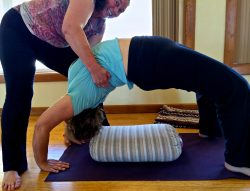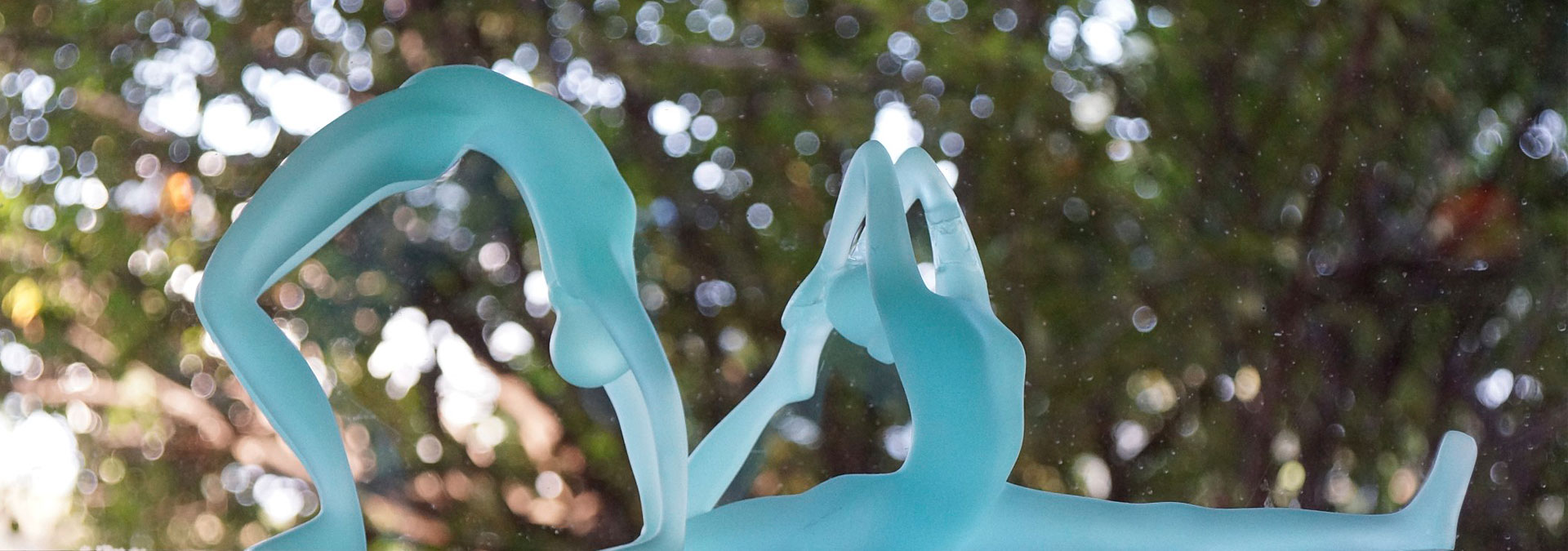What does it mean to show up? I first heard the expression when a young friend of mine used it to describe how his mother, who is dealing with cancer, remains focused, attentive and present with others even as the disease requires more and more of her time and energy. This is not an easy accomplishment. We are all distracted by our lives and our problems. Indeed, each day we are asked to show up numerous times in various roles: mother, father, friend, boss, pastor, teacher, student, patient, doctor, even stranger. The list is as endless as the many parts we play in life, and depending on our role we might be excited or afraid, eager or reluctant. The question is: how do we show up? HOW is what is important because it’s the only thing we can control. How we show up is what the path of yoga is all about.
In India, teacher Prashant taught about mudra and gesture in asana. Mudras are position of the body that have some impact on the energy of the body or the mood. When you press your palms together in namaskar at the beginning of class, that is a mudra. If you fold your hands to pray, that is a mudra. The power of the position of the hands has an immediate effect bringing the person to a quieter place and often bringing about a relaxed or calm feeling. I was taught to sit for meditation in the same position each time so that the position had the effect of a mudra, you subconsciously know why you are in this position before you even begin, like priming a pump. If you dissect the word mudra, Mu- means to lock-in celestial forces, and dra- means to expel or eject unwelcome or demonic forces. Therefore, it is important when practicing to get the mudra correct.
What is the appropriate gesture in a pose? All poses have a suitable gesture so that the asana has the right effect. For example, in Savasana (Corpse Pose) we create a serene and passive face, if one were to harden the eyes or contract the skin of the face the body would not relax properly. Prashant gave the example of the student who comes to class with an inquisitive gesture, verses a “know it all” gesture. The inquisitive gesture is appropriate because it stimulates the flow of knowledge from teacher to student. To paraphrase Geeta Iyengar, You can’t learn anything if you think you know everything. You must be humble to learn. Mudra is more than gesture. A mudra is a lock on something. For instance, in abdominal poses we lift the muscles of the abdomen and spread them toward the spine then we put a lock there to hold them. This lock is maintained as you do the pose and it has the effect of strengthening the core and protecting the low back. Sometimes we place a wrong lock, such as gripping the neck and shoulders in Utthita Trikonasana (Triangle Pose), so it is important to learn appropriate locks and get rid of inappropriate locks. Prashant explained that appropriate locks light celestial forces within us. These forces combine with the breath and help to transform negativity.
At a recent retreat I had an experience of transformation that surprised me. After teaching a long asana class I left the room and thought to myself, What just happened there? It had been a fine class, full of energy, cooperation and enthusiasm, and I felt fully present with the students, but I felt as if I had just watched myself teach, as though this bold composed teacher was not me. I would have thought I imagined it but several students commented to me that they perceived a change as well. Something had been brewing for months as I began to release my idea of how a classes should go and instead focused on what was really happening to the people in front of me as I taught. Who knows, perhaps it was the simplicity and depth of the teachings in India that finally sunk in. Talk about humbling, it bordered on humiliating.



